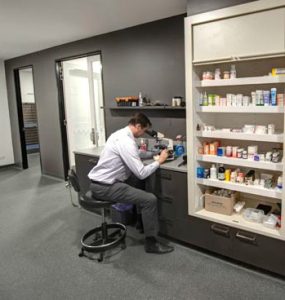We recommend every new lump gets examined when first noticed. As we all know, the main concern with a “lump” is that it may be a cancer of some sort. The mistake people make is leaving a lump because “it wasn’t causing him any concern”.
Here’s the thing about cancer. When the cancerous lump is causing your pet some sort of concern, it’s often too late to cure. Cancerous masses often don’t affect the patient at all for quite some time as it continues to get larger. Hence if you notice any new lump, get it looked at and examined immediately. Often times lumps are benign or just cysts, or fatty deposits. But if there is a concern over a particular lump, then the earlier the intervention the better.
Within a consultation there may be a degree to which a veterinarian is concerned about a lump. Depending on this level of concern we may recommend monitoring, removal (plus or minus histopathology), or biopsy first and then removal with a degree of aggressiveness that depends on the biopsy result. Ultimately there is no absolute right or wrong about what to do with each individual case, but a process to go through depending on our level of concern.
When you see your vet for a new lump, most times we will do what’s called a fine needle aspirate. This is a simple initial test whereby we will get a small sample by inserting a fine needle into the lump. If what we get looks a little suspicious, we can stain it on the spot and have a look under a microscope. If we are concerned over seeing suspicious looking cells we will then discuss the merits of lump removal, or possible biopsy first to see exactly what it is that we are dealing with.
Fine Needle Aspirate Versus Biopsy:
We often hear our clients say that they had a “biopsy” of a lump when in fact what they had was a fine needle aspirate as described above. There is a very definite difference. The fine needle aspirate is not nearly as accurate as a biopsy and merely gets a few representative cells – if we’re lucky. These can be identified as cancer by a pathologist but most time the pathologist will not be able to determine how nasty that cancer is. For that they will need a “biopsy”. A biopsy is defined as a “piece” of the tumour rather than just a few cells. For this we need to fully anaesthetise the patient and actually cut out a representative wedge of the suspicious lump. From this the pathologist has a much greater chance of actually identifying the exact nature of the tumour.
Depending on a clinicians degree of concern over a particular lump, this may be recommended before surgical removal.

